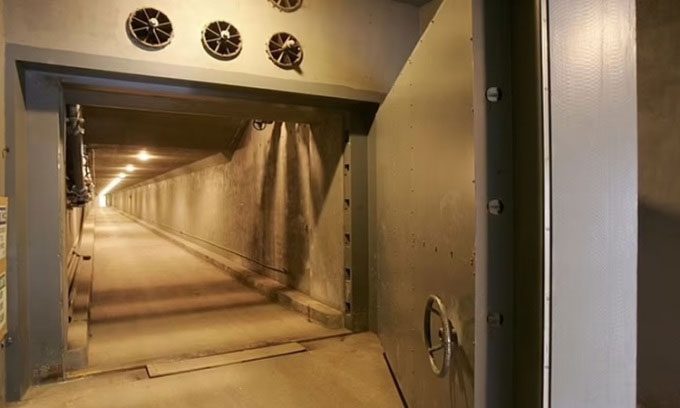The bunker is located beneath a luxury hotel in the United States, designed to protect government officials in the event of a nuclear war.

The entrance to the bunker is behind a 28-ton heavy door. (Photo: GreenbrierWV).
The luxurious Greenbrier Hotel, located in Sulphur Springs, West Virginia, sits above an emergency bunker 229 meters underground, developed in 1958 specifically for American politicians to take refuge in the event of a nuclear attack, according to Mail. The hotel’s false walls conceal a blast-resistant door weighing between 20 to 28 tons, leading to a reinforced concrete bunker that includes 1,100 beds, a conference room, and a special care room.
The government evacuation facility is also nicknamed “Greek Island,” and once housed enough supplies, including food, water, and medicine, to last for six months. It is unclear whether the U.S. Congress ever moved into the underground bunker, but the facility was decommissioned in 1992 and has since become a tourist attraction.
During the Cold War between the United States and the Soviet Union, the threat of nuclear war raised concerns among politicians. The U.S. government acquired the resort from the Chesapeake and Ohio Railway in 1942, and the construction of the bunker under the Greek Island project took 2.5 years.
The underground facility contains everything necessary to sustain life in the event of a nuclear attack. Sturdy doors protect those inside from radioactive dust, bomb blasts, or intruders. Some doors are hidden behind wallpapered walls or false doors. A chemical decontamination chamber at the entrance washes off radioactive dust from anyone seeking refuge in the bunker. Besides living quarters, a meeting room, and a medical room, the facility also has an operations room equipped with weapons and communication devices to ensure the safety of its occupants.
Disguised as electrical repair workers at the hotel, government officials replenished the bunker’s supplies over the years. In 1992, when the Washington Post reported on the bunker, interviews with construction workers and government officials revealed the scale of the project. The U.S. federal government quickly decommissioned the bunker. After two years of renovation, the facility opened for public tours in 2006.


















































